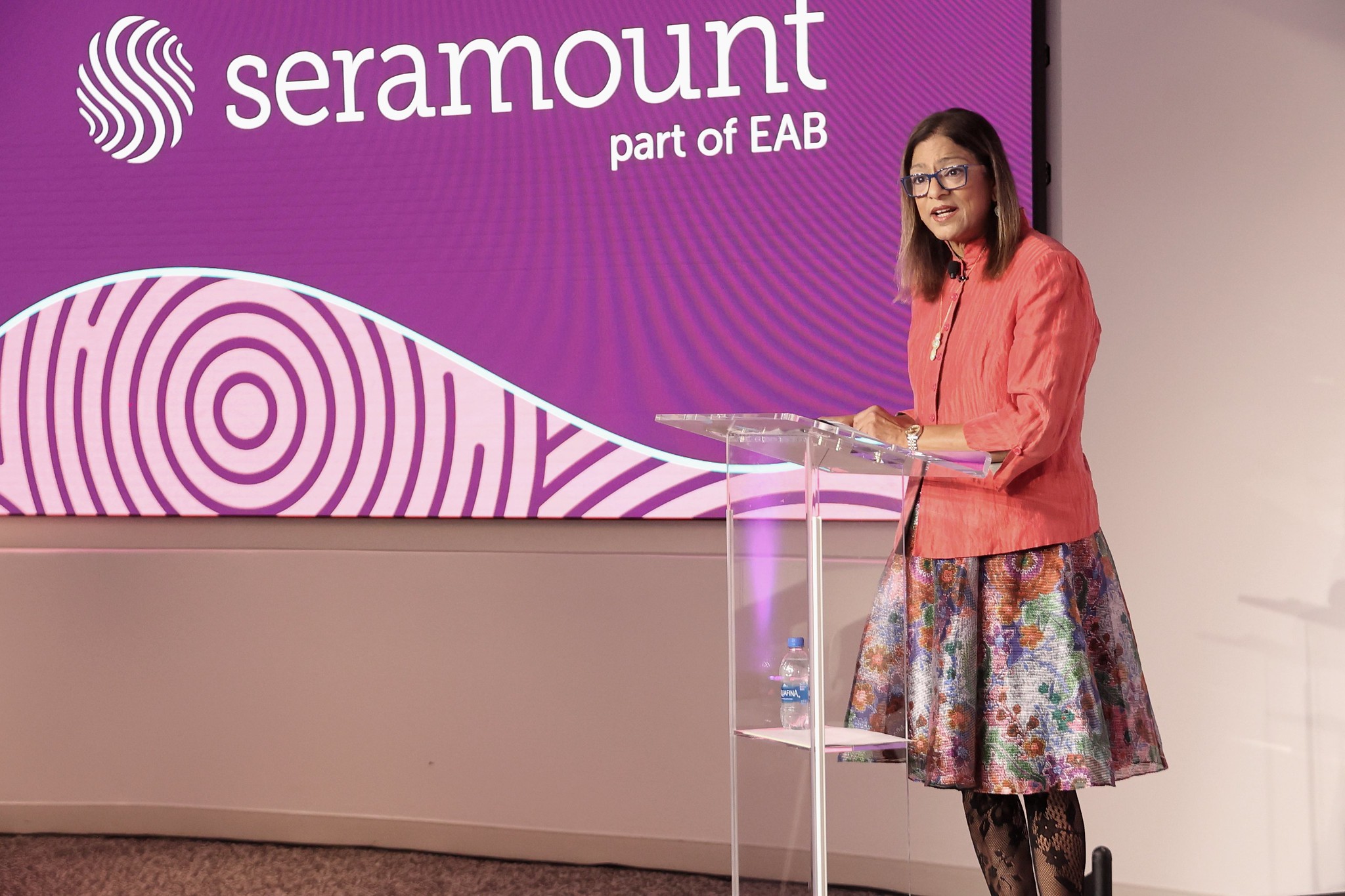Being a Diversity, Equity, and Inclusion (DEI) leader is a rewarding job, but it’s also an extremely difficult one that often includes having to tell an inconvenient truth. We are constantly facing obstacle after obstacle, from legislation being passed to budgets being cut; it’s an extremely challenging time to be a DEI leader.
Those obstacles, coupled with an ambivalent executive team, complicate things even further. According to our 2021 Pledge to Progress Research, while 95 percent of corporate executives say they are committed to the work, 79 percent of those feel the focus and attention on DEI is overblown. This impacts all of us as we navigate these uncertain and tumultuous times.
As a DEI leader, I’m often asked about the state of DEI today: What’s next?, What does this new law mean?, How do we shore up our DEI programs in this economy?, and more. If you pay attention to the news, it would appear that we are pulling back on DEI initiatives and commitments after making pledges and proclamations following George Floyd’s murder. While this may be the case for some of the late joiners, the core remains strong and committed. Let’s drill down on what’s in people’s minds:
With the pushback on DEI and “Woke” values, how are you guiding your partners to respond?
According to The Wall Street Journal, corporations are talking less and less about ESG and DEI efforts in earnings calls. A look at 575 earnings calls from April 1 to June 5 showed a 31 percent decrease in mentions of related terms compared to the same period last year. It’s the fifth drop in quarterly year-over-year comparisons after a surge following the murder of George Floyd in 2020.
The pushback to DEI is real, but the words we use to do this work have received the most forceful pushback: diversity, equity, belonging, micro-inequities, microaggressions, critical race theory, etc. Now, take a moment to compare them to the words we associate positively with the work we do to create inclusion: fairness, justice, thoughtfulness, welcoming, inclusiveness, decency, etc.
Why do we associate behaviors such as ‘=”being Woke” with the very words most of us would pick to describe ourselves, our allies, and supporters? So, instead of triggering words, let’s focus on the behaviors and outcomes the words drive.
Mark Cuban, owner of the Dallas Mavericks, says he has no qualms with being called “woke” when it comes to inclusivity. Ultimately, he said, embracing diversity is just a good business decision. “Call me woke—you don’t need to call it DEI, you can call it whatever you want—I call it good business,” Cuban said recently. “It means taking the people that you’re selling to and making sure your workforce looks like them and making sure you can reflect their values and being able to connect to that. That’s what works for me.”
How does a DEI leader maintain sustained energy and efforts to promote DEI? We believe the key to success is to be relentless about the “I”: Inclusion.
The definition of what diversity means will continue to evolve and change.
As more than 50 percent of our country becomes represented by communities of color other than “white” in the next 20 years, the language and focus will have to move to a more inclusive one about TALENT. In order to attract and retain talent, companies must focus on creating inclusive cultures where all talent can thrive. This has been Seramount’s mantra right from the start.
Now that the U.S. Supreme Court has overturned race-conscious Affirmative Action, what can companies be doing now to continue to have access to diverse talent for recruiting?
On June 29, 2023, in a 6 to 3 ruling, the U.S. Supreme Court ended the decades-long precedent to allow race as one factor (among many) in college admissions.
Affirmative Action has been part of a broader mission of colleges and universities contributing to a better society. Racial diversity on campus is needed. Why? Because bringing together diverse, young minds is a necessity to offer different perspectives and ideas, which produces more innovation and better outcomes and adds to the richness of society. In my opinion, this work must start well before college, because if racial inequities are felt at the collegiate level, that feeling can inevitably transfer to the workplace.
Now that Affirmative Action has been reversed, this will impact the admissions rates for underrepresented populations and will ultimately reduce the pipelines and pools for diverse talent. I recently wrote about three ways employers can support inclusive hiring, because once these pools become smaller and smaller, organizations will not be able to rely on the same recruitment and hiring tactics: hiring from the same universities and schools, using algorithms to filter applications, or looking for the same experiences and backgrounds for vacant positions. Now that we can no longer rely on our government, it is up to corporate America to set the precedent so that opportunities can be expanded for historically excluded talent.
To attract today’s talent at all levels of employment (from next-generation to mid-career to senior-level), organizations must continue to go above and beyond what’s required by law for their employees, from increased parental leave policies to promoting work/life balance, to truly transform their culture into inclusive workplaces so that all employees can thrive.
Should we be focused on creating intersectional ERGs as opposed to the traditional gender, race, sexual orientation-focused dimensions of diversity?
At Seramount, we like to say that ERGs are an organization’s secret weapon—its superpower—when they are leveraged correctly. Over the past three years, as hybrid work has become the norm, ERGs have been valuable conduits to employees, giving them a sense of belonging and helping build relationship capital during times of disruption. Organizations are also activating ERGs for business impact and recruitment and advancement efforts and for building and sustaining workplace culture.
Some employers have noticed that the way employees identify themselves has dramatically shifted. Younger people are much more likely to see themselves as multiracial and to align with several dimensions of diversity, not only to race and ethnicity. We are becoming a more intersectional society.
As a result, some corporations have been moving away from traditional affinity-based ERGs, preferring to address all “multicultural” needs together. They have created DEI councils or other groups that have representatives from various affinities but look at DEI issues more holistically.
Our research team wanted to take a deeper look at this trend and surveyed more than 200 ERG members with this critical question: Are affinity-based ERGs (those centered on individual dimensions of diversity) still necessary? The Answer: A resounding YES.
We learned from our respondents that affinity groups create a vital safe space during turbulent times when talking about specific identities and that affinity groups help meet the different needs of different groups and that each group has unique experiences. What’s lacking are stronger allies—people who do not identify with the affinity group but are publicly supportive—at the senior leadership level, which can help elevate the needs of the group.
One of the important takeaways is to create intersectional allyship, cross-programming, collaboration, and inclusivity among the various ERGs that may exist in your organizations. That will create the culture of true inclusion as one underrepresented group leans on another and supports the other!
How can we maintain our focus on DEI when it’s being put under another umbrella, such as ESG?
As companies continue to expand, their stakeholders: employees, consumers, and communities, expect these organizations to have a positive influence in the world around them through their Environmental, Social, and Governance (or ESG) efforts.
Historically, it has been Corporate Social Responsibility (or CSR) that promotes sustainability, as well as philanthropic efforts such as volunteerism and community building. But CSR lacks the metrics for holding leaders accountable for these results. That’s where ESG comes in. It has become the counterpart to CSR, which relies on metrics. As we like to say, “What gets measured gets done.”
Through ESG, corporations are held publicly accountable for their socioeconomic and environmental commitments to both their employees and external communities, and companies are coming together to establish globally recognized metrics that will standardize their ability to track DEI and ESG progress inside and outside their organizations.
It’s important to note that ESG could transform DEI from an abstract concept to a set of standards with measurable results. For example, DEI can help with transparency around pay equity and governance. However, there are risks associated with sweeping DEI under the ESG rug, effectively burying it so that the term DEI is no longer used.
With budgets and headcounts for DEI being decimated, what are the critical things we as DEI leaders can do during these times of economic headwinds and uncertainty?
We recently revealed early findings from Seramount’s upcoming CDO Collaborative research: “Keeping DEI Strong During Volatile Times” and components of this research are about how DEI leaders must move beyond making the “business case” for their DEI programs and put real metrics behind their efforts. For example, “Our employees should represent our customer base” should become “We increased our profits by 30 percent through selling more Black-owned beauty brands.” And “Diverse teams come up with more innovative ideas” should become “Collaborating with our neurodiverse employees helped us develop this new product.” Specificity and uniqueness are required.
By taking these steps, DEI leaders can protect their efforts by demonstrating value and engaging otherwise indifferent stakeholders. I look forward to revealing the full research in October.
The state of DEI will continue to change, but the focus and work on DEI must go on; otherwise, it will be one step forward and three steps back. If you’re a new CDO without a built-in support system, consider joining Seramount’s Chief Diversity Officer Collaborative, a community of committed practitioners dedicated to creating sustained engagement. Contact us for more information.


